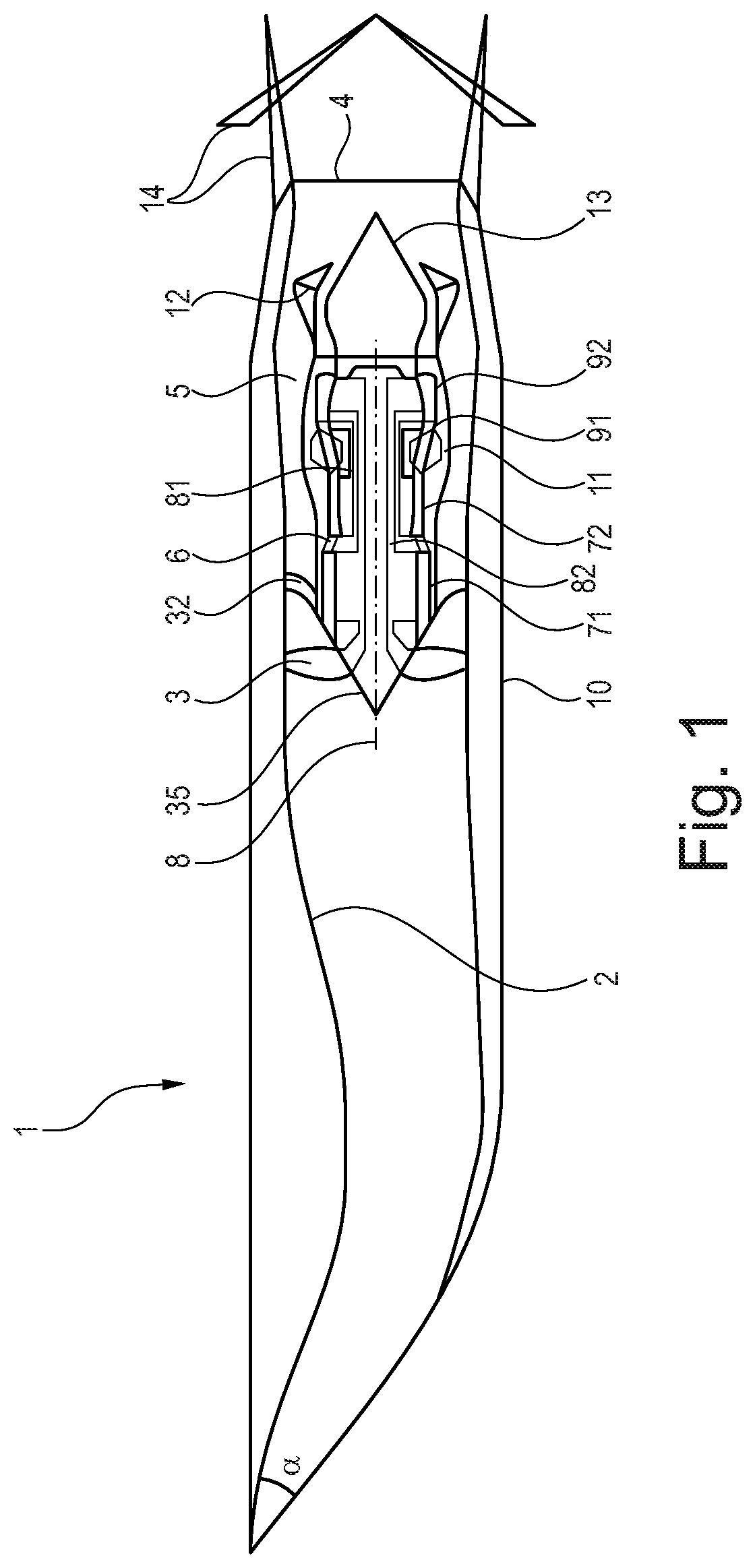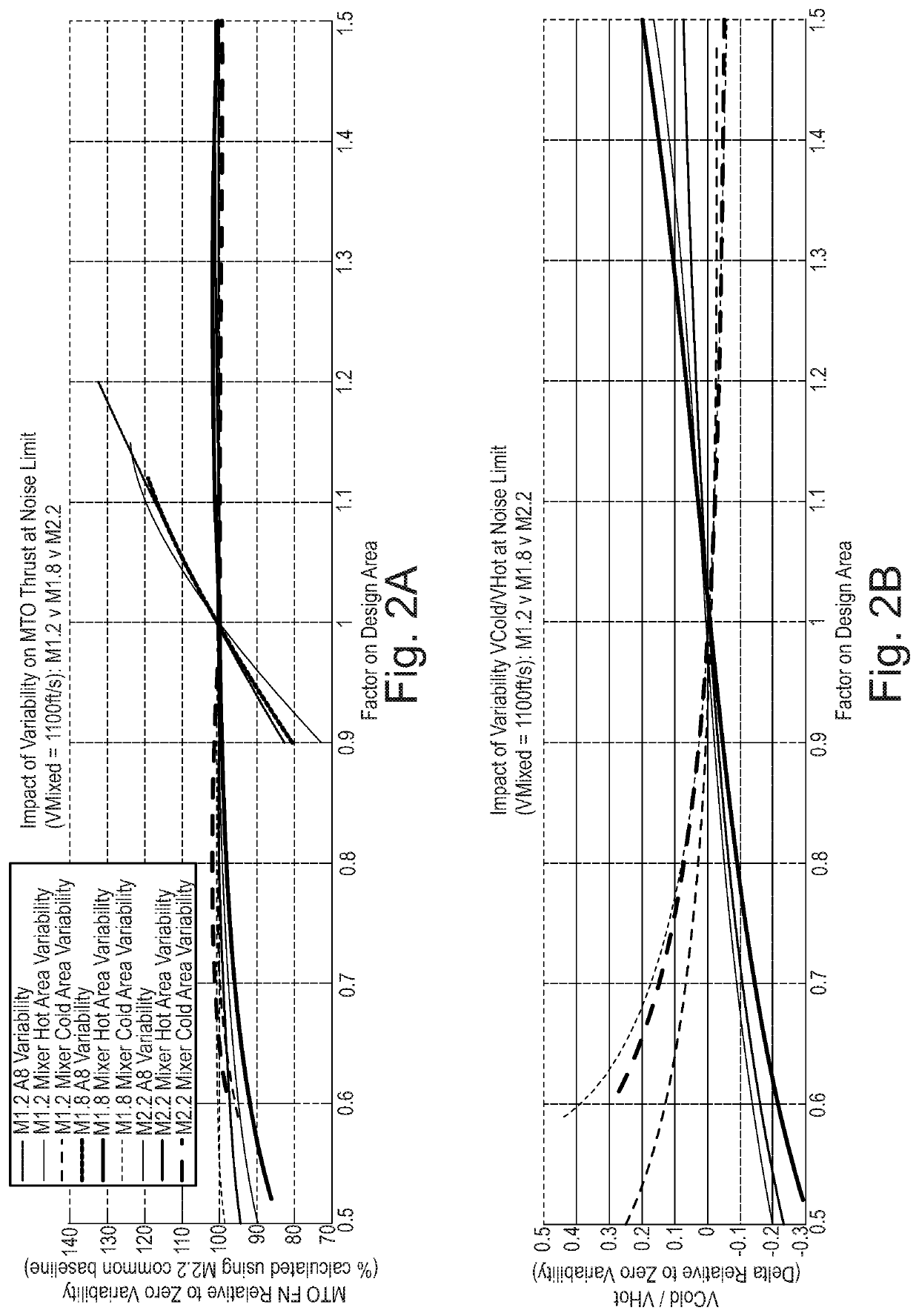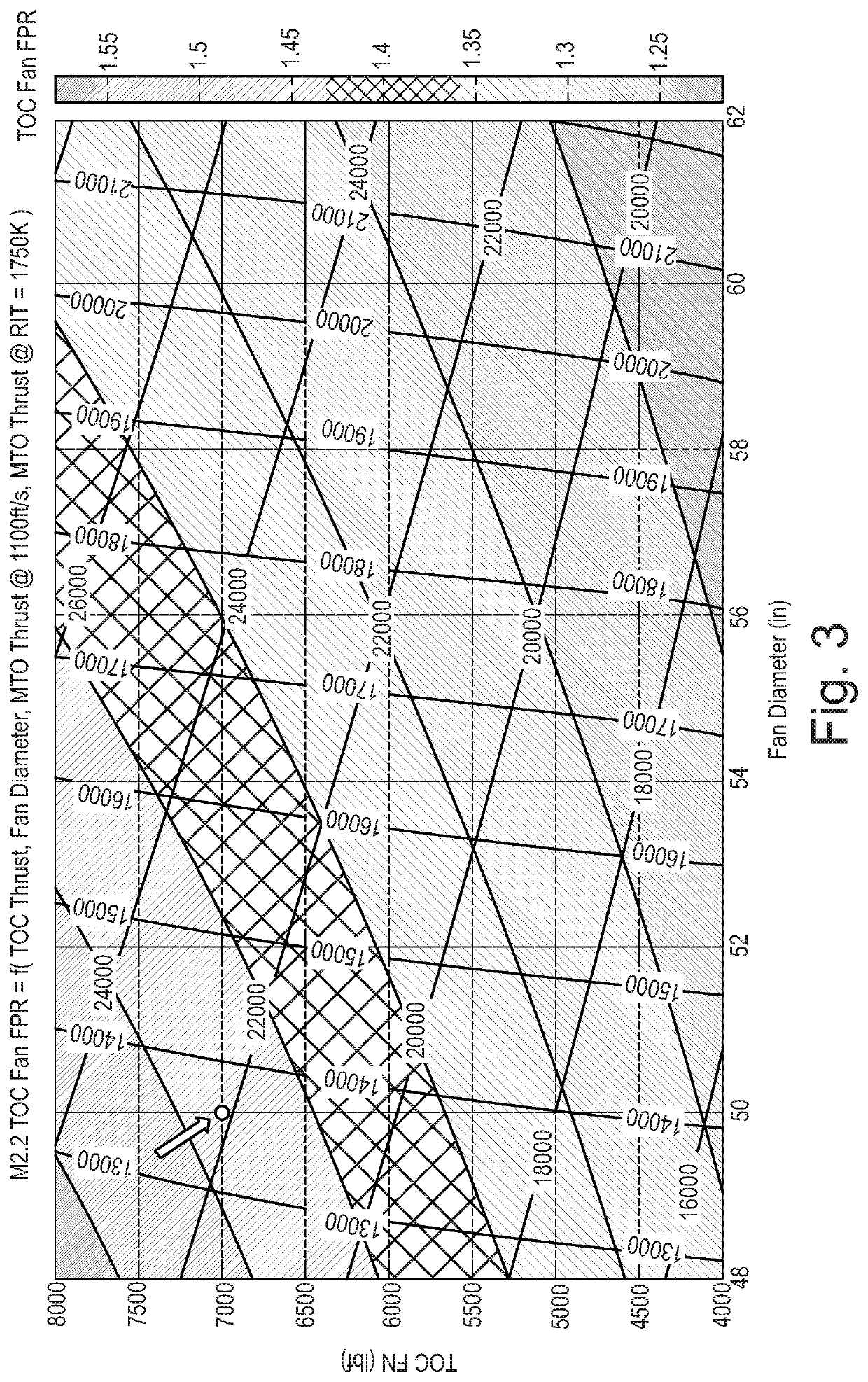Supersonic aircraft turbofan
a turbofan and supersonic technology, applied in the direction of machines/engines, mechanical equipment, transportation and packaging, etc., can solve the problems of low maximum lift, high take off speed, and increase weight and engine complexity
- Summary
- Abstract
- Description
- Claims
- Application Information
AI Technical Summary
Benefits of technology
Problems solved by technology
Method used
Image
Examples
Embodiment Construction
1. Engine
[0048]FIG. 1 shows a longitudinal cross-section through a turbofan engine 1 for a civil supersonic aircraft. The turbofan engine 1 comprises an engine intake 2, a single stage fan 3 (although in other embodiments a multi-stage fan can be used), a primary flow channel 6 that leads through a engine core, a secondary flow channel 5 that leads past the engine core, a multi-lobed mixer 12, and a thrust nozzle 4 into which a thrust reverser 14 (shown in both stowed and deployed configurations) can be integrated.
[0049]The turbofan engine 1 has a machine axis or engine centre line 8. The machine axis 8 defines an axial direction of the turbofan engine. A radial direction of the turbofan engine extends perpendicularly to the axial direction.
[0050]The engine core comprises in a per se known manner a compressor 71, 72, a combustion chamber 11 and a turbine 91, 92. In the shown exemplary embodiment, the compressor comprises a booster compressor 71 and a high-pressure compressor 72. The...
PUM
 Login to view more
Login to view more Abstract
Description
Claims
Application Information
 Login to view more
Login to view more - R&D Engineer
- R&D Manager
- IP Professional
- Industry Leading Data Capabilities
- Powerful AI technology
- Patent DNA Extraction
Browse by: Latest US Patents, China's latest patents, Technical Efficacy Thesaurus, Application Domain, Technology Topic.
© 2024 PatSnap. All rights reserved.Legal|Privacy policy|Modern Slavery Act Transparency Statement|Sitemap



